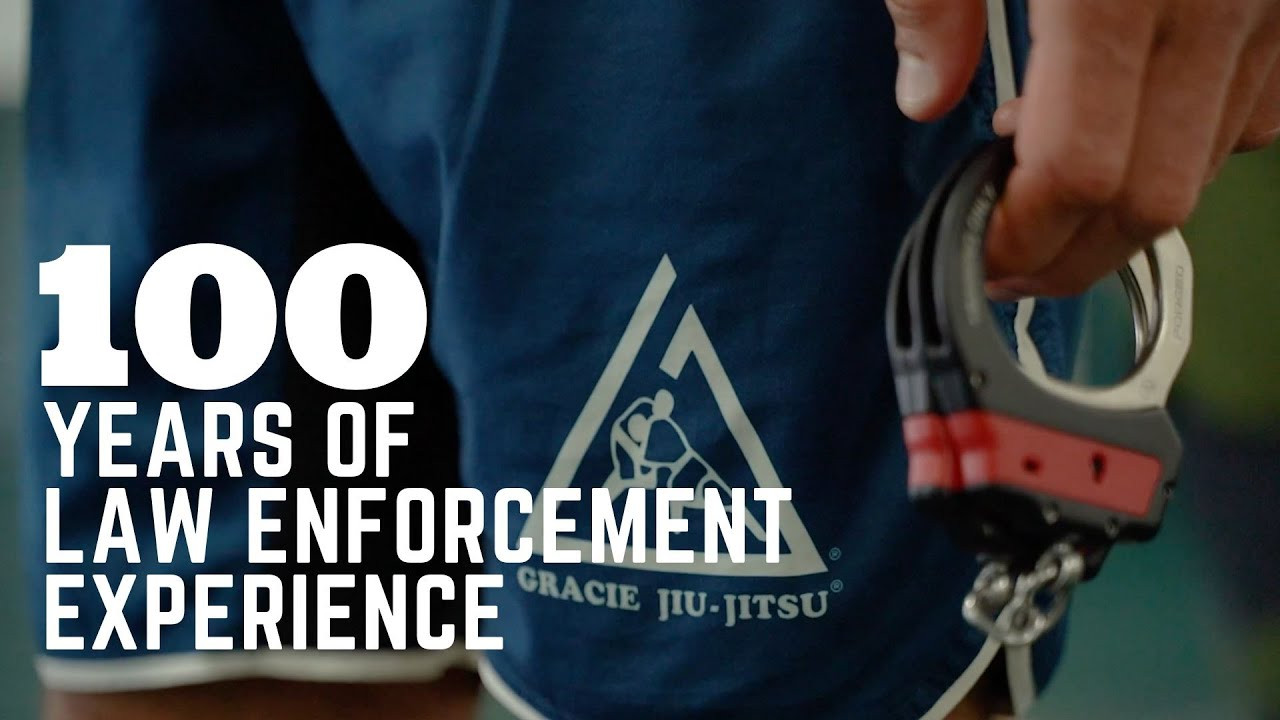Gracie Survival Tactics for Police

Police reform continues to be a hot-button issue, but just about everyone can find common ground on two things: Police officers should only use force as a last resort, and they should strive to never use force that is excessive. Using excessive force violates the rights of the citizens they are sworn to protect and frays trust between departments and communities. When people don’t trust their local police departments, crimes go unreported and public safety suffers.
This is not a simple problem with a simple solution, but one point that comes up time and time again is training. When police are better trained to handle difficult situations and confrontations, they are less likely to use excessive force. Excessive force is not a display of strength, but rather of fear. As Tom Chuckerel, a third-degree black belt in Brazilian Jiu-Jitsu and former lead defensive tactics instructor to the Montgomery County Police Department in Maryland, explains in the below video, “In most cases, when an officer uses excessive force, it’s because they’re undertrained, and they panic in that high-stress encounter.”
Given that he has over 20 years of experience in law enforcement, Chuckerel has seen this kind of dynamic play out in the real world. He also knows firsthand how to fix it.
Preparing for the Worst
In every precinct around the country, officers are expected to undergo firearm training before they get their badge. Once they have that badge, they are then required to go to firearm practice and to regularly recertify.
From the outside, this doesn’t seem that odd. Films and television make it seem like officers are regularly pulling their guns, and it would make sense to train officers to prepare for such a scenario. While we all know that shootouts aren’t exactly everyday occurrences, 83% of people in a 2017 survey assumed that an average officer would fire their service weapon at least once in their career. According to the same survey, around three-in-ten estimated that the average officer fires their weapon a few times each year while on duty.
In actuality, the figure is way lower. As of 2017, only about 27% of officers reported ever firing their service weapon while on the job.
Weapons training occurs with regularity because there is a widespread belief that we should always expect the best, but prepare for the worst, and being comfortable with a weapon will help ensure that it is used correctly.
Unfortunately, the same kind of reasoning doesn’t always apply to all forms of training, especially when it comes to using nonlethal types of force. In most precincts there is no continued education when it comes to hand-to-hand combat. Officers are left to fend for themselves. When an untrained officer finds themselves in a situation where they need to subdue a suspect who is unarmed but aggressive, they may resort to excessive uses of force simply because they are panicking and don’t know what else to do.
Graice Jiu-Jitsu is changing that.
The Marietta Miracle
In 2019, the police department in Marietta, Georgia, found itself in the national spotlight after a video surfaced showing four officers struggling to subdue one person. Worse, one of the officers was seen punching the suspect in the face after tasing him. It was a clear use of excessive force by a group of severely undertrained officers.
In the aftermath, Major Jake King of the Marietta Police Department started a voluntary jiu-jitsu program available to officers. Within just a few years, King saw an almost 60% decline in use of force among officers trained in jiu-jitsu. Serious injuries to suspects overall fell by 53%. Perhaps most telling was the fact that suspects who resisted arrest were 200% more likely to be injured by officers with no training than an officer who had jiu-jitsu training.
In addition to learning the moves that can help them subdue suspects, jiu-jitsu also teaches officers discipline and how to stay calm under pressure. More than just avoiding lawsuits or public outrage, having officers trained in martial arts increases the odds that encounters with police end with everyone walking away alive.
Spreading the Word
According to Chuckerel, the Montgomery County Police Department in Maryland adopted Gracie Survival Tactics in 2015 and they have seen similar results. The experience also encouraged him to join the Gracie program to spread the word to other departments around the country. This is part of a larger effort on the part of Gracie University to hire instructors with extensive law enforcement experience to tailor jiu-jitsu curricula to cops. Their knowledge of jiu-jitsu and the day-to-day life of an officer allows them to adapt the fundamentals of jiu-jitsu for situations that are common in law enforcement, thereby improving public safety.
As Chuckerel says, giving cops more training reduces the level of force necessary in difficult encounters. Meanwhile, giving them more confidence in their abilities reduces the likelihood that they won’t resort to unnecessary force: “We learn to fight so that we never have to.”

